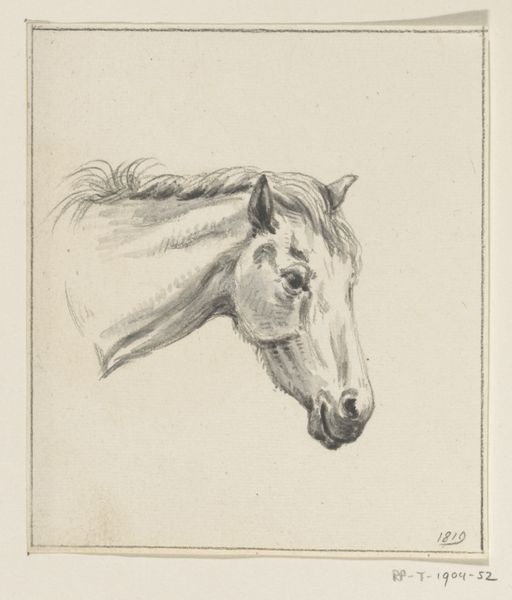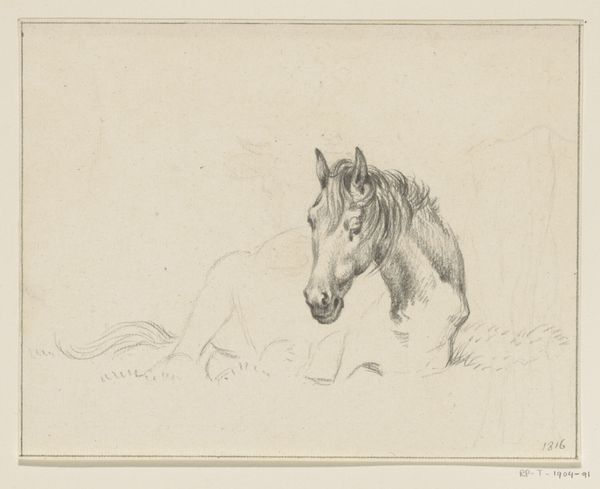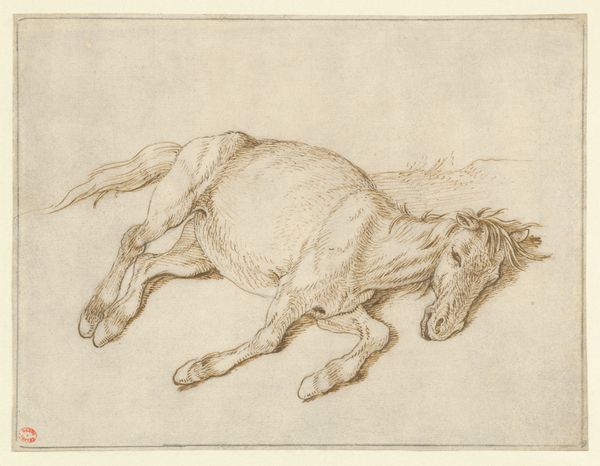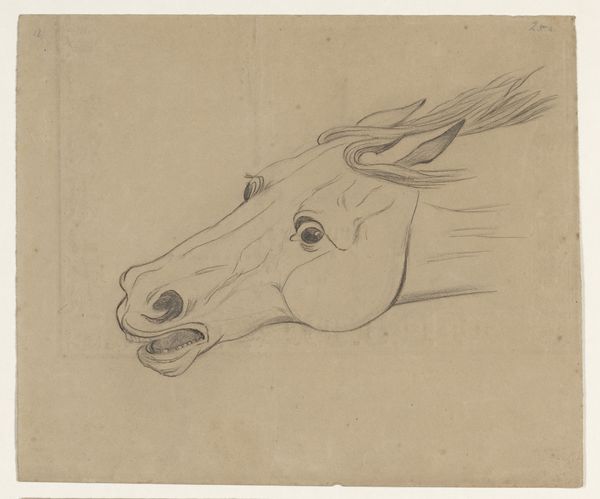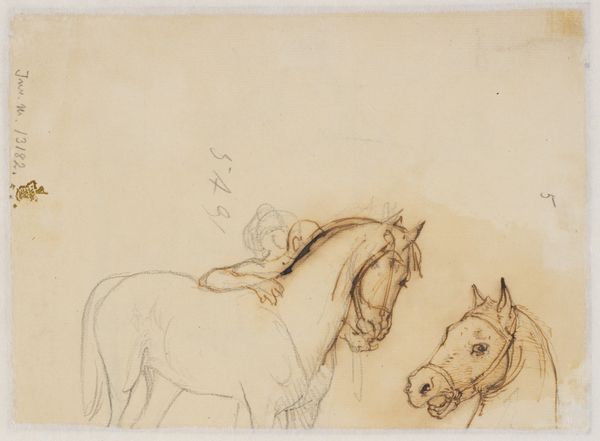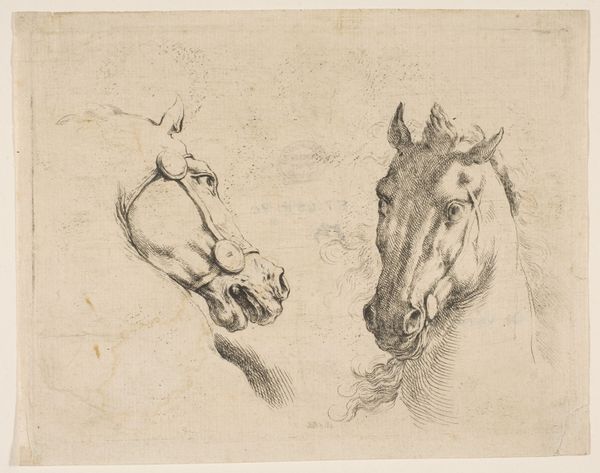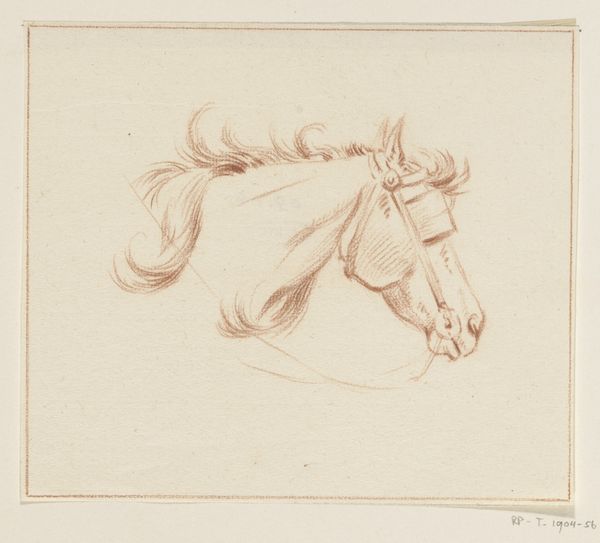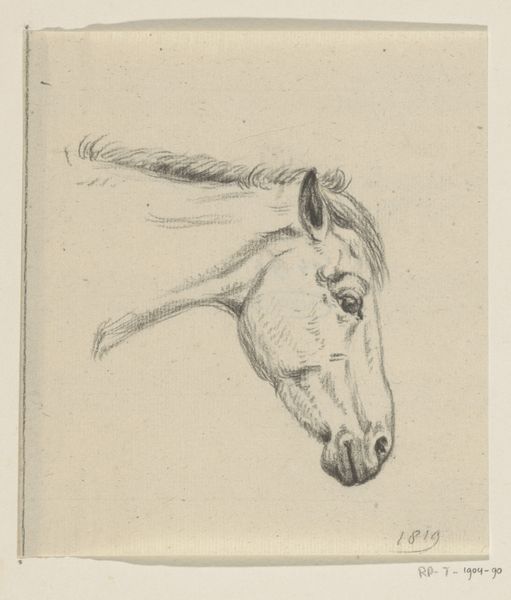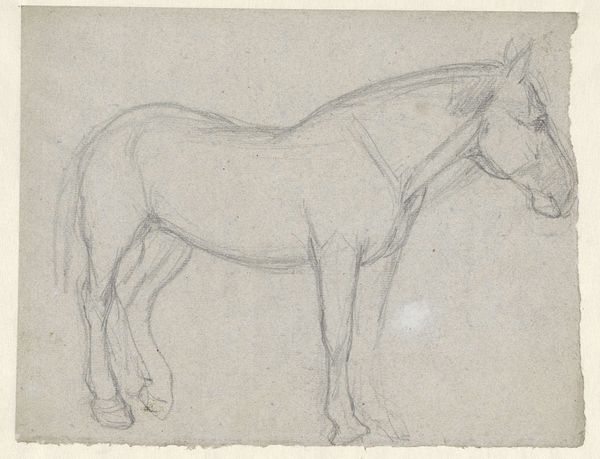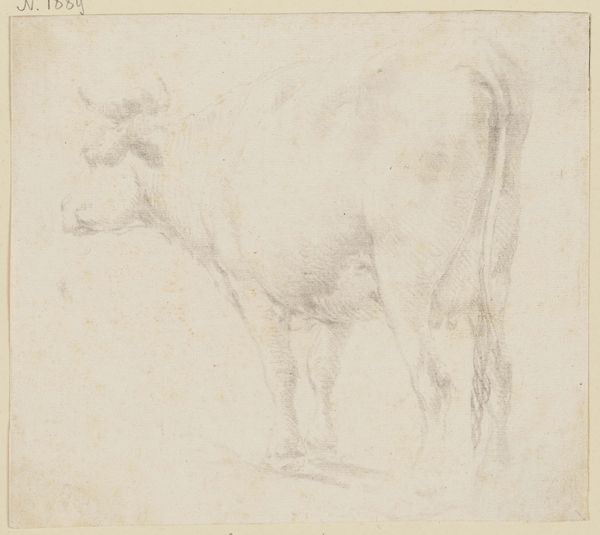
drawing, pencil
#
portrait
#
pencil drawn
#
drawing
#
light pencil work
#
pencil sketch
#
figuration
#
pencil
#
realism
Dimensions: height 169 mm, width 243 mm
Copyright: Rijks Museum: Open Domain
Jean Bernard made this drawing of a donkey head and leg with graphite around the turn of the 19th century, but why devote such careful study to such a humble beast? In Dutch art of this period, the most common farm animals - horses, cows, sheep - were increasingly celebrated as symbols of national prosperity and rural virtue. The donkey, on the other hand, traditionally symbolized lower class servitude, but its presence here can be viewed as a sign that Dutch society was changing, with the rise of a more compassionate and progressive culture. Perhaps the artist viewed the donkey as an under-appreciated creature whose quiet labour deserved recognition. Analyzing such historical sources – agricultural records, political pamphlets, popular songs – allows us to understand the changing place of the donkey, and the place of art within the shifting social landscape of the Netherlands.
Comments
No comments
Be the first to comment and join the conversation on the ultimate creative platform.
